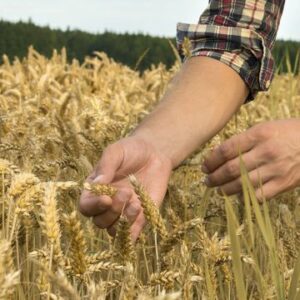Better Oats, Less Nitrogen
In 2015, Midwestern BioAg partnered with a large food company (LFC) to explore how Midwestern BioAg’s fertility program could improve the quality of food grown for their consumer brands. The study focused on oat production and involved existing BioAg customers who established and harvested more than 2,000 acres of oats.
“We found that oats grown on the BioAg program required substantially less purchased nitrogen,” noted Dr. Maggie Phillips, Midwestern BioAg Chemist and Project Manager. “Test plots averaged 0.44 units of purchased nitrogen per bushel, about 50 percent less than what is typically applied. This is noteworthy, especially as large food companies seek to lower the carbon footprint of their supply chains.”
Reducing nitrogen use can lower the greenhouse gas (GHGs) emissions associated with its production (making nitrogen is an energy-intense process). It can also reduce the likelihood of nitrous oxides escaping into the atmosphere and nitrates leaching into the water. The study also revealed additional findings about nutritional values.
“Grain analysis showed that oats grown on the BioAg program contained nearly 59 percent more beta-glucans, or soluble fiber,” said Dr. Phillips. Beta-glucans have been shown to help lower cholesterol, allowing food companies to make “heart-healthy” claims. Protein levels in the grains also shot up close to 50 percent.
Midwestern BioAg Regional Sales Manager Ron Gifford said he wasn’t surprised by the nutritional gains. “The increase in nutritional values for oats looks a lot like the nutritional gains we see in forage,” said Gifford. “The same principles apply. If the nutrients are available in the soil, they’ll end up in the plant and ultimately in the food and forage.”
The study will continue into 2016, with the oats acreage expected to increase to more than 5,000 acres.
Future Projects
Current research efforts include long-term collaborations with major universities, including the Universities of Wisconsin, Illinois and Arizona. All trials are designed to evaluate products, and to assess the overall impact of Midwestern BioAg’s systems-based approach to farming.
In addition to this work, the BioAg research team will continue assessing current and potential products. This includes exploration of new liquid fertilizers to expand and complement current offerings, new seed genetics, as well as product analysis and comparison.

